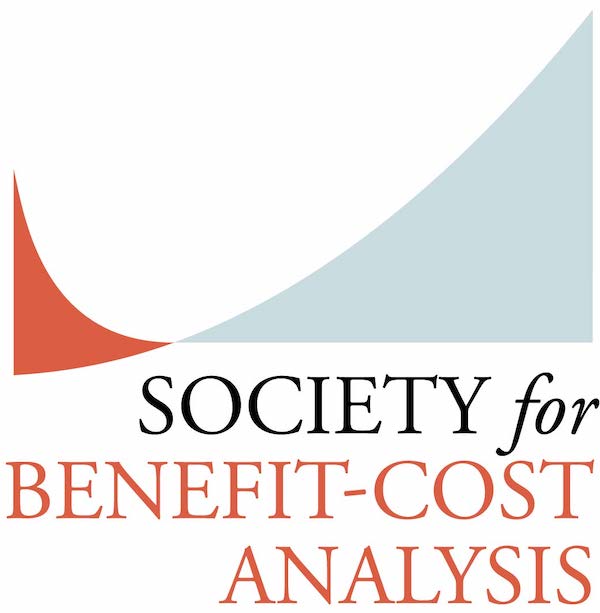 The evidence access to safe sanitation services is essential for reducing child mortality and improving public health is overwhelming (Mara et al. 2010 & Prüss-Ustün et al. 2019). The international public health and medical communities have reached a consensus that access to sanitation services is a priority. Readers of the British Medical Journal voted the “sanitary revolution” as the most significant medical achievement since 1840 (Ferriman 2007). The United Nations’ Millennium Development Goals and Sustainable Development Goals both include explicit targets for increasing access to sanitation services. Despite overwhelming support for promoting sanitation in low-income countries, however, the problem remains large as an estimated 4.2 billion people worldwide are using inadequate sanitation facilities and almost 700 million have no access to any sanitation (UNICEF and WHO 2020).
The evidence access to safe sanitation services is essential for reducing child mortality and improving public health is overwhelming (Mara et al. 2010 & Prüss-Ustün et al. 2019). The international public health and medical communities have reached a consensus that access to sanitation services is a priority. Readers of the British Medical Journal voted the “sanitary revolution” as the most significant medical achievement since 1840 (Ferriman 2007). The United Nations’ Millennium Development Goals and Sustainable Development Goals both include explicit targets for increasing access to sanitation services. Despite overwhelming support for promoting sanitation in low-income countries, however, the problem remains large as an estimated 4.2 billion people worldwide are using inadequate sanitation facilities and almost 700 million have no access to any sanitation (UNICEF and WHO 2020).
I discuss two recently published benefit-cost analyses of sanitation interventions in low-income countries (Radin et al. 2020a, Radin et al. 2020b). While the results of the analyses show that in some cases sanitation interventions yield benefits greater than the costs, in many instances the costs are greater than the benefits. The analyses demonstrate the importance of improving the public health sector’s understanding of the community level factors that influence intervention effectiveness. Furthermore, there is a clear need for developing new interventions that compliment sanitation interventions and increase latrine uptake and use. These innovations can help policymakers properly target new sanitation programs and maximize their benefits.
Community-Led Total Sanitation (CLTS) has become the preferred approach for improving access to sanitation in rural areas since it was introduced in 2000 in Bangladesh (Zuin et al. 2019). CLTS works as a behavior change campaign targeting community norms through a number of activities that elicit disgust and shame with the status quo and trigger aspirational goals for a cleaner, healthier, and safer community. Community members are expected to organize and work together to end open defecation and ensure that all households gain access to and use basic facilities, most often simple pit latrines.
I summarize the results of a benefit-cost analysis of a CLTS intervention that served as a case study for the Bill and Melina Gates Foundation funded Guidelines for Benefit-Cost Analysis (Guidelines) (Radin et al. 2020a). The Guidelines were designed to help analysts perform high quality benefit cost analyses for health policies and projects in low-income countries. The project resulted in a number of technical papers and a general guidelines report that were used in designing the CLTS benefit cost analyses (Robinson & Hammitt 2018, Robinson et al. 2018, Claxton et al. 2019, Robinson et al. 2019, Whittington & Cook 2019).
For the CLTS case study, we assumed that the intervention was implemented in a hypothetical region in Sub-Saharan Africa. We analyzed the intervention on a regional level because the scaled version of CLTS is typically implemented across a region.
The analysis used cost estimates for the CLTS intervention from numerous impact evaluations of CLTS interventions in Sub-Saharan Africa (Crocker et al. 2017). The costs of the intervention include the program administration, time costs of community members participating in the intervention, the costs of latrine materials, and those for ongoing operation and maintenance. We valued the time spent in the program and building latrines at 50% of the estimated local informal wage rate (Whittington and Cook 2019).
To estimate the benefits, we drew on the results of fourteen recent randomized control trials testing the impact of CLTS and similar interventions in low-income countries. Incorporating this body of evidence into the economic analysis is an important contribution as many other prior benefit cost analyses studies have relied on general assumptions to estimate impacts (Whittington et al. 2020). This new evidence also shows that villages within targeted regions have heterogeneous responses to CLTS interventions; meaning that some villages in targeted regions experience low uptake of improved sanitation while others have higher adoption rates. We incorporate this heterogeneity by assuming a distribution of villages with three groups: low, medium and high response. Unfortunately, more nuanced targeting of programs to locations where success is most likely remains difficult because the CLTS literature has not identified a clear set of population and village characteristics that can influence uptake rates.
While there are numerous health and non-health benefits to gaining access to sanitation, due to data limitations, we only monetized the benefits of reducing mortality and morbidity due to diarrheal disease, and the time savings from reduced time spent walking to open defecation sites. The mortality and morbidity benefits are valued through a VSL approach and a cost-of-illness approach (Robinson & Hammitt 2018, Robinson et al. 2018). Time savings are valued at the same rate as time costs. We also considered the impact of a sanitation externality, which is the benefit households in a village derive due to other households within the same village adopting latrines. The sanitation externality exits because one household’s use of latrines reduces the overall environmental contamination, thereby benefiting all households in the village.
We find that a traditional CLTS intervention does pass a benefit–cost test in many situations, with a benefit-cost ratio B greater than one in 75% of the trials in a Monte Carlo analysis, but that the results are less favorable than many other analyses have found (Whittington et al. 2020). Furthermore, we find that incorporating the benefits of a sanitation externality in this hypothetical region has positive but limited effects.
One of our main conclusions is that sanitation benefit cost analyses need to be location specific rather than for a general or hypothetical region. We followed this recommendation and produced a subsequent analysis for a CLTS intervention in Ghana (Radin et al. 2020b). In the Ghana specific analysis, we also modelled the potential impacts of subsidies for latrine construction that could be justified due to the public good nature of the sanitation externality. In the Ghana analysis, we found that subsides are necessary for the CLTS intervention to generate sufficient uptake to pass a benefit-cost test.
Ultimately, we conclude that while improving access to sanitation remains a priority, the cost of a CLTS intervention may outweigh the benefits in many locations. Public health practitioners and sanitation experts need to invest resources into identifying the attributes that most influence the response to a CLTS intervention so that high-uptake villages can be identified. In such villages, the benefits of sanitation and capture of positive externalities are greater. We also encourage more work on complementary policies and innovations that can improve sanitation adoption.
References
Claxton, K., Asaria, M., Chansa, C., Jamison, J., Lomas, J., Ochalek, J., & Paulden, M. (2019). Accounting for Timing when Assessing Health-Related Policies. Journal of Benefit-Cost Analysis, 10(S1): https://doi.org/10.1017/bca.2018.29.
Crocker, J., Saywell, D., Shields, K. F., Kolsky, P., & Bartram, J. (2017). The true costs of participatory sanitation: Evidence from community-led total sanitation studies in Ghana and Ethiopia. Science of the Total Environment, 601, 1075-1083.
Ferriman A. (2007). BMJ readers choose the “sanitary revolution” as greatest medical advance since 1840. BMJ: British Medical Journal, 334(7585), 111. https://doi.org/10.1136/bmj.39097.611806.DB
Mara, D., Lane, J., Scott, B., & Trouba, D. (2010). Sanitation and Health. PLoS Medicine, 7(11), e1000363. https://doi.org/10.1371/journal.pmed.1000363
Prüss-Ustün, A., Wolf, J., Bartram, J., Clasen, T., Cumming, O., Freeman, M. C., Gordon, B., Hunter, P. R., Medlicott, K., & Johnston, R. (2019). Burden of disease from inadequate water, sanitation and hygiene for selected adverse health outcomes: An updated analysis with a focus on low- and middle-income countries. International Journal of Hygiene and Environmental Health, 222(5), 765–777. https://doi.org/10.1016/j.ijheh.2019.05.004
Radin, M., Jeuland, M., Wang, H., & Whittington, D. (2020a). Benefit–Cost Analysis of Community-Led Total Sanitation: Incorporating Results from Recent Evaluations. Journal of Benefit-Cost Analysis, 11(3), 380-417.
Radin, M., Wong, B., McManus, C., Sinha, S., Jeuland, M., Larbi, E., Tuffuor, B., Biscoff, N.K., & Whittington, D. (2020b). Benefits and costs of rural sanitation interventions in Ghana. Journal of Water, Sanitation and Hygiene for Development, 10(4), 724-743.
Robinson, L. A., & Hammitt, J.K. (2018). Valuing Nonfatal Health Risk Reductions in Global Benefit-Cost Analysis. Guidelines for Benefit-Cost Analysis Project, Working Paper No. 2. https://cdn2.sph.harvard.edu/wp-content/uploads/sites/94/2017/01/Robinson-Hammitt-Nonfatal-Risks.2018.03.121.pdf.
Robinson, L. A., Hammitt, J.K., & Adler, M. (2018). Assessing the Distribution of Impacts in Global Benefit-Cost Analysis. Guidelines for Benefit-Cost Analysis Project, Working Paper No. 3. https://cdn2.sph.harvard.edu/wp-content/uploads/sites/9 4/2017/01/Robinson-Hammitt-Adler-Distribution-2018.03.07.pdf.
Robinson, L. A., Hammitt, J.K., & O’Keeffe, L. (2019). Valuing Mortality Risk Reductions in Global Benefit-Cost Analysis. Journal of Benefit-Cost Analysis, 10(S1): https://doi.org/10.1017/bca.2018.26.
United Nations Children’s Fund (UNICEF) and the World Health Organization (WHO). (2020). State of the World’s Sanitation: An urgent call to transform sanitation for better health, environments, economies and societies. New York, New York: United Nations Children’s Fund (UNICEF) and the World Health Organization.
Whittington, D., & Cook, J. (2019). Valuing Changes in Time Use in Low- and Middle-Income Countries. Journal of Benefit-Cost Analysis, 10(S1): https://doi.org/1 0.1017/bca.2018.21.
Whittington, D., Radin, M., & Jeuland, M. (2020). Evidence-based policy analysis? The strange case of the randomized controlled trials of community-led total sanitation. Oxford Review of Economic Policy, 36(1), 191-221.
Zuin, V., Delaire, C., Peletz, R., Cock-Esteb, A., Khush, R., & Albert, J. (2019). Policy diffusion in the rural sanitation sector: lessons from community-led total sanitation (CLTS). World Development, 124, 104643.
 Past studies of Ebola, HIV, dengue, and Zika by infectious disease epidemiologists provide a road map for the use of outbreak and contact tracing data to estimate transmission parameters for application in mathematical models. There are several primary goals for modeling efforts in this context.
Past studies of Ebola, HIV, dengue, and Zika by infectious disease epidemiologists provide a road map for the use of outbreak and contact tracing data to estimate transmission parameters for application in mathematical models. There are several primary goals for modeling efforts in this context.
 Thomas Schelling suggested in his book Micromotives and Macrobehavior that cost-benefit choices by individuals can explain the emergence of population-level phenomena in a game theory model. We can apply Schelling’s binary choice framework to social distancing.
Thomas Schelling suggested in his book Micromotives and Macrobehavior that cost-benefit choices by individuals can explain the emergence of population-level phenomena in a game theory model. We can apply Schelling’s binary choice framework to social distancing.


 R
R
 The evidence access to safe sanitation services is essential for reducing child mortality and improving public health is overwhelming (Mara et al. 2010 & Prüss-Ustün et al. 2019). The international public health and medical communities have reached a consensus that access to
The evidence access to safe sanitation services is essential for reducing child mortality and improving public health is overwhelming (Mara et al. 2010 & Prüss-Ustün et al. 2019). The international public health and medical communities have reached a consensus that access to 


 If the Value of a Statistical Life (VSL) is observed to be a function of income and policy fixes VSL as a constant, then policy has defined welfare weights over income.
If the Value of a Statistical Life (VSL) is observed to be a function of income and policy fixes VSL as a constant, then policy has defined welfare weights over income.



